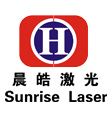Laser brazing is a kind of laser welding technology. Compared with fusion welding, the base metal does not melt during brazing, only the brazing material melts, and a smooth weld surface can be obtained, which not only makes the product more beautiful, but also improves the sealing property. Moreover, the strength of the welding area is significantly improved, and the safety performance of the whole vehicle is greatly improved.
At present, in the automotive industry at home and abroad, laser brazing is mainly applied to visible peripheral joints, such as the connection between the top cover and the left and right side panels, the connection between the upper and lower parts of the trunk, and the flow tank, etc., European and American Some of the top and high-end models are laser brazed, and Japanese and independent brands are also eager to try, or have already purchased equipment, or are conducting research on related technologies. The main manufacturers of laser welding equipment manufacturers successfully developed and applied in China. There is a large group of laser intelligent equipment group, the laser brazing process is applied to the welding machine, and it is delivered to some domestic automobile manufacturers, which has been unanimously recognized by customers.

What are the main parameters of the process?
(1) spot diameter
The diameter of the spot has a greater influence on the spreading of the solder. The spot diameter is too small, the laser is concentrated on the brazing material, the heating of the base metal is insufficient, the brazing material is cooled too fast when spreading on the base material, so that the brazing material is not easy to spread; the spot diameter is too large, and if the laser power is insufficient, the melting cannot be melted in time. If the laser power is sufficient, the welding wire will seriously burn the base metal. For the roll butt joint, the spread of the solder is sufficient when the spot diameter is substantially the same as the weld width (filler width).
(2) Laser power
The speed at which the wire melts depends on the amount of laser energy, ie the laser power. When the laser power is insufficient, the welding wire has a slow melting speed, insufficient spreading, long working time and low production efficiency; when the laser power is too large, the welding wire melts fast, and if the wire feeding speed cannot keep up, the welding seam exhibition Intermittent. The maximum laser power is limited by the equipment. The adjustment of the laser power is mainly based on its matching with the welding speed and the wire feeding speed.
(3) Welding speed and wire feeding speed
The welding speed determines the length of the working time and the level of production efficiency. Therefore, the appropriate welding speed should be selected according to the laser power that the equipment can provide to improve the production efficiency. Generally, the faster the welding speed, the higher the production efficiency, but for a circular arc weld or a transition weld with a small radius, the centrifugal force generated by the excessively fast welding speed will hinder the spreading of the molten solder and make the welding process unstable. .
Once the welding speed has been selected (its maximum is determined by the performance of the robot), the appropriate wire feed speed is matched to the amount of weld fill. If the wire feeding speed is too fast, the solder material will accumulate on the surface of the weld, which will affect the appearance quality. If the wire feeding speed is too slow, the surface of the weld will be sunken. Too little filling will affect the welding strength of the weld. Of course, the adjustment of the wire feed speed also needs to consider the size of the laser power.
(4) Other factors
In addition, the wire feeding angle, the inclination angle of the welding head and the hot wire current during the hot wire also have a great influence on the welding quality. In the process of process debugging, the above factors must be comprehensively considered to obtain the best welding quality.
(This article was originally written by Chenxi Laser. Reprinted must indicate the source: www.lasersunrise.com, cherish the labor results of others, is to respect yourself)










